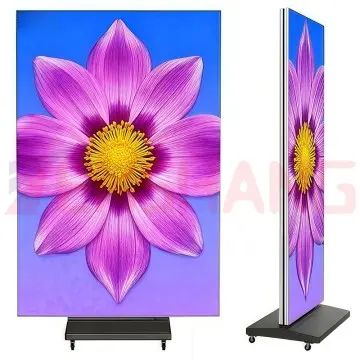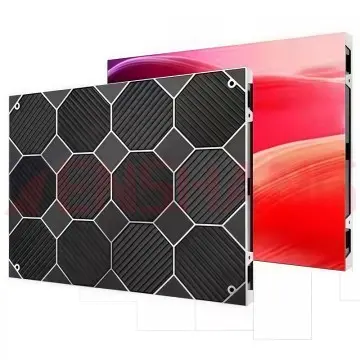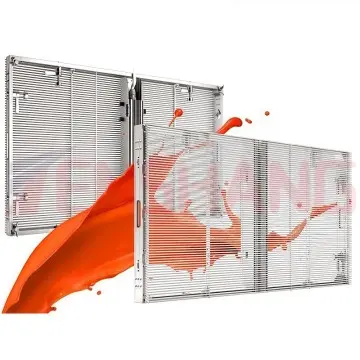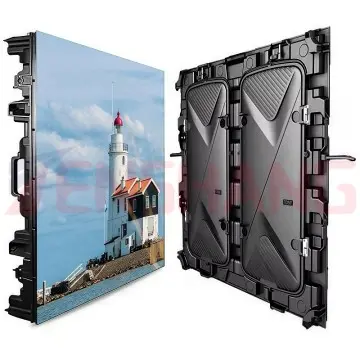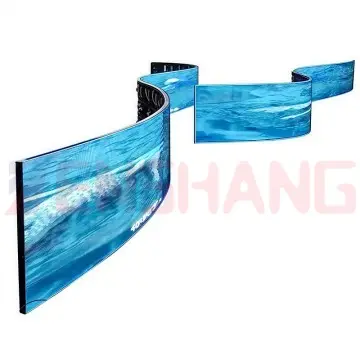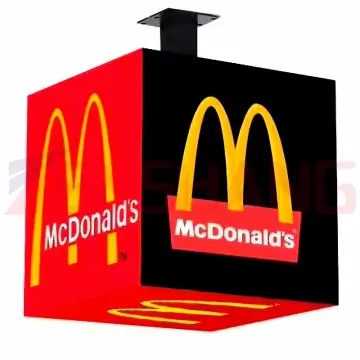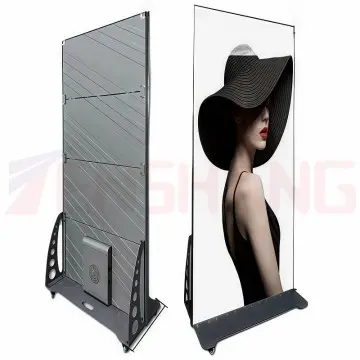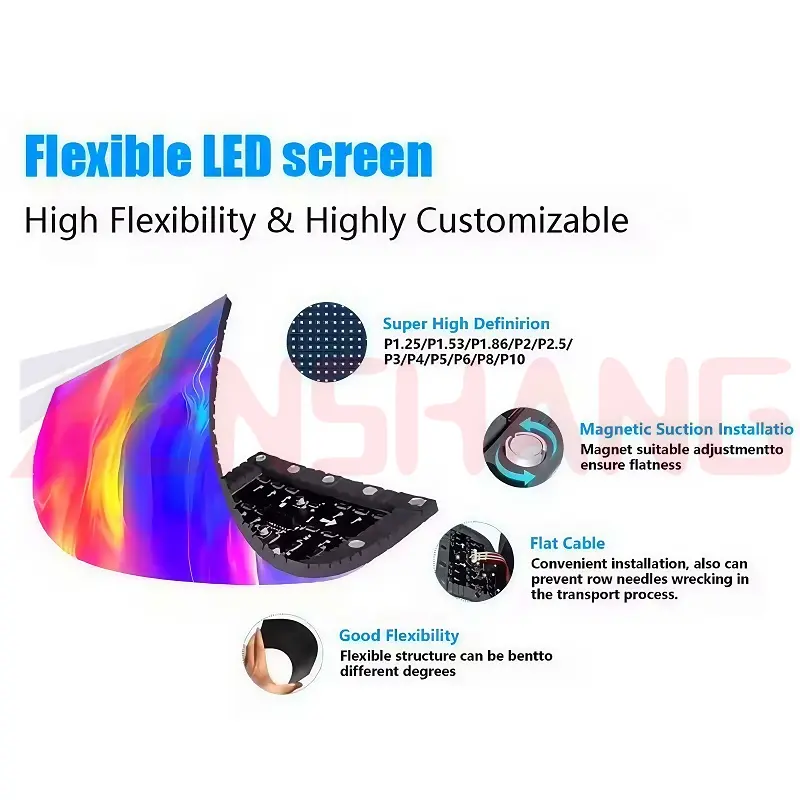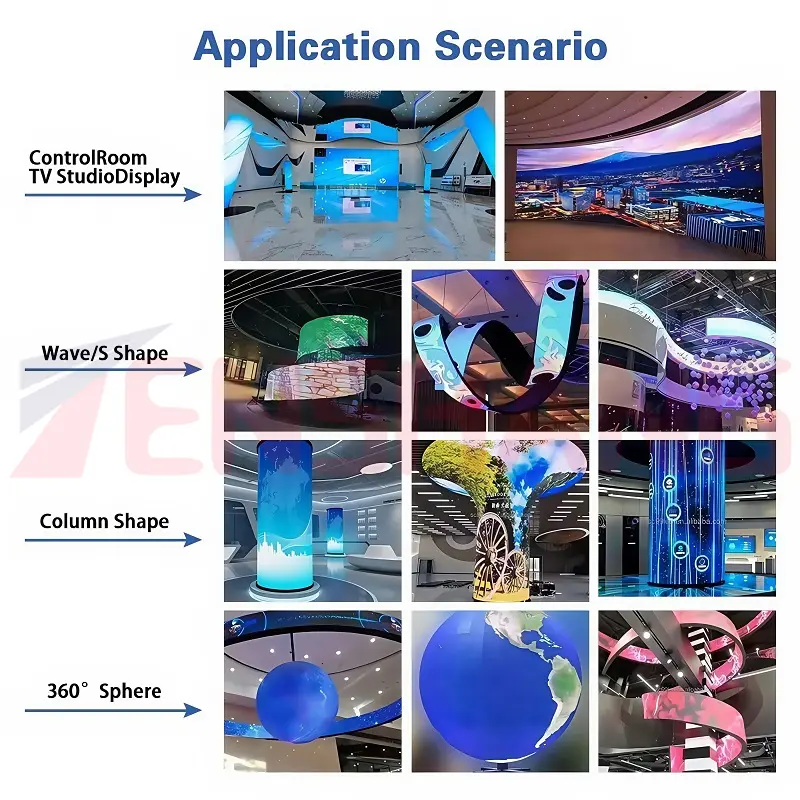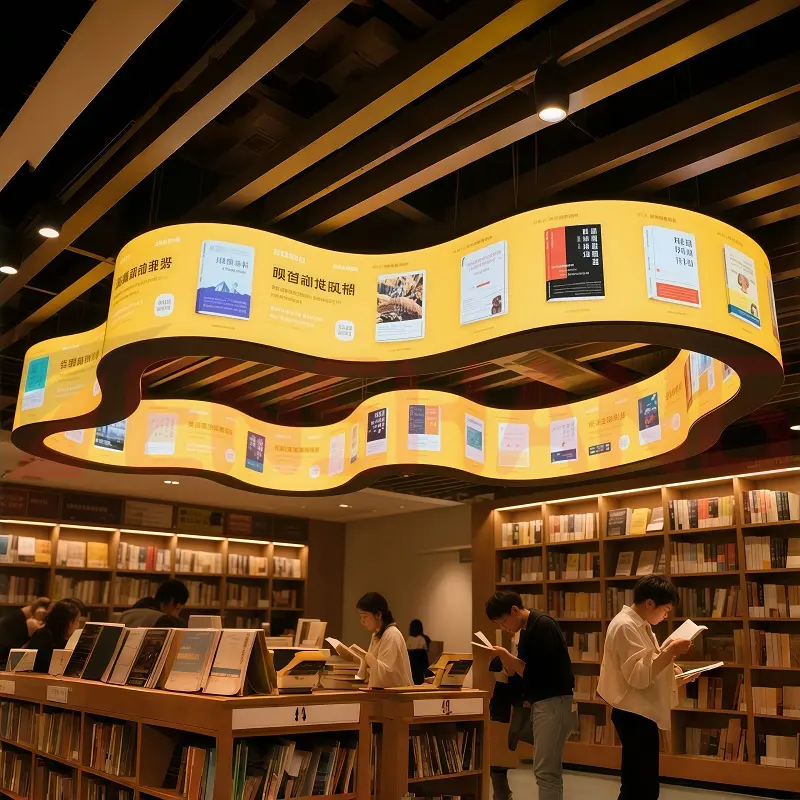Pantalla Led Flexible Screen Curved Display Creative Arc Wavy Irregular

What shapes can be made of flexible LED display screens?
As an innovative masterpiece in the field of display technology, TENSHANG LED flexible display screens have subverted people's inherent perception of traditional screens with their unique "flexible genes". Their core advantage lies in the amazing bending and folding capabilities of the LED modules — as if endowed with vivid vitality, they can freely fit various irregular surfaces such as curved surfaces and edges, and always maintain a stable display effect on uneven surfaces.
This feature that breaks through the constraints of form enables flexibler led display to unlock unlimited creativity: from smooth and stretched U-shaped ring screens, to wavy screens simulating water wave rhythms, from 360° panoramic displays wrapping cylinders, to special-shaped decorations outlining building curved surfaces... It is no longer a rigid "flat carrier", but a "visual link" that can deeply integrate with spatial forms. It injects a more layered and immersive expression dimension into scenarios such as commercial displays, stage arts, and architectural decorations, making every irregular space a stage for light and shadow narratives.
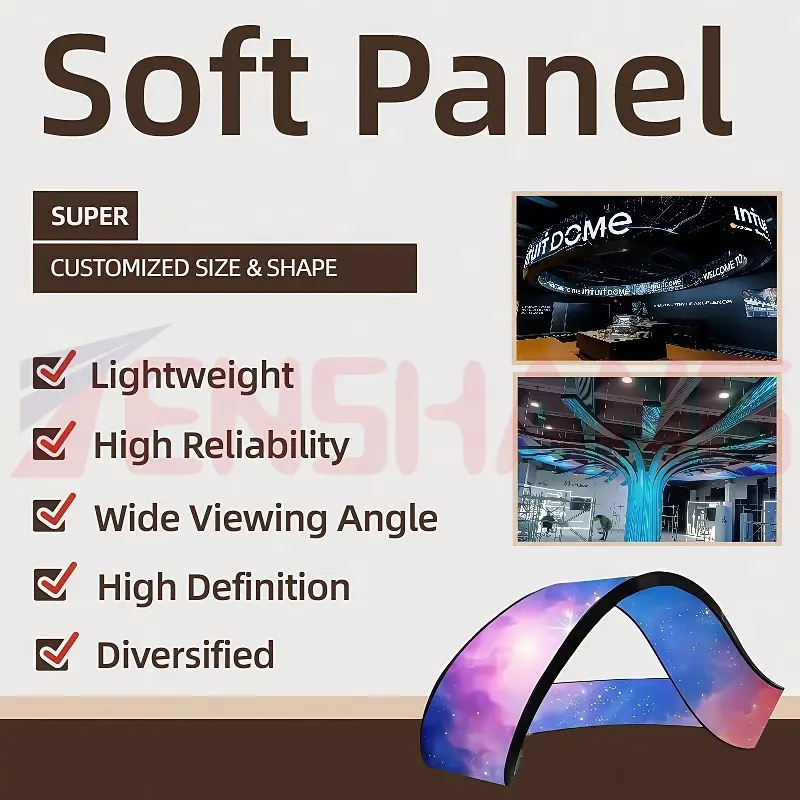
Boasting its unique flexibility, the innovative LED flexible display technology has made significant breakthroughs in both display forms and application scenarios. It transcends the form constraints of traditional displays, bringing more creativity and possibilities to the display field:
1. Lightweight and Portable
Compared with traditional rigid LED displays, the modules of flexible LED displays are much thinner and lighter, with a substantial reduction in weight. This makes them far more convenient to install and transport, while also lowering the load-bearing requirements for the installation carrier.
2. High Reliability
Thanks to the use of special flexible materials and packaging technologies, these displays can maintain stable performance even when bent, folded, or subjected to other forms of deformation. They are highly resistant to damage, thereby extending their service life.
3. Wide Viewing Angle and High Definition
They inherit the advantages of LED displays, featuring a wide viewing angle that allows audiences to see clearly from various directions. Meanwhile, they also offer high resolution, ensuring the fineness of the displayed images.
4. Diversified Application Scenarios
With their ability to adapt to irregular surfaces, they are widely applied in fields such as stage performances, commercial advertising, architectural decoration, and special-shaped signage. For instance, dynamic arc-shaped background screens can be created on stages to enhance the visual impact of performances; when installed on cylindrical columns in shopping malls, they can deliver a unique advertising effect.

LED flexible displays offer exceptional flexibility and adaptability when it comes to installation: they can be easily secured using diverse methods such as magnetic mounting, adhesive attachment, and suspension, eliminating the need for complex bracket structures. This feature allows them to excel in installation scenarios involving curved or irregular surfaces — whether decorating a building’s curved exterior or creating a 360° wrap-around effect on cylindrical objects, they achieve quick fit and stable fixation, making the installation process more efficient and hassle-free.
Furthermore, the modular design enhances their practical advantages: the entire screen consists of multiple small flexible modules joined together. Each module is not only lightweight and compact but also can be installed and spliced independently, significantly reducing construction difficulty. For later maintenance, there’s no need to disassemble the entire screen; instead, simply replacing the faulty module precisely can quickly restore the overall display performance. This "breaking the whole into parts" design concept not only simplifies installation but also substantially reduces labor and time costs, making long-term use and maintenance more economical.
Led pantalla flexible parameter
| TS0007-YX | P1.25 | P1.53 | P1.86 | P2 | P2.5 | P3 | P4 |
| Pixel Pitch | 1.25mm | 1.53mm | 1.86mm | 2mm | 2.5mm | 3mm | 4mm |
| LED | SMD1010 | SMD1212 | SMD1515 | SMD1515 | SMD2020 | SMD2020 | SMD2020 |
| Pixel Density (dot/㎡) | 640000 | 427186 | 288906 | 250000 | 160000 | 105625 | 62500 |
| Module size (mm) | 320X160 | ||||||
| Module Resolution | 256X128 | 208X104 | 172X86 | 160X80 | 128X64 | 104X52 | 80X40 |
| Cabinet size (mm) | Customized | ||||||
| Material | Iron/Aluminum/Diecasting Aluminum | ||||||
| Scanning | 1/64S | 1/52S | 1/43S | 1/40S | 1/32S | 1/26S | 1/20S |
| Cabinet Flatness (mm) | ≤0.1 | ||||||
| Grey Rating | 14 bits | ||||||
| Application environment | Indoor / Outdoor | ||||||
| Maintain Service | Front & Rear | ||||||
| Brightness | 1000-3000 nits | ||||||
| Frequency | 50/60HZ | ||||||
| Refresh Rate | ≥3840HZ / 7680HZ | ||||||
| Power Consumption | MAX: 800Watt/sqm Average: 200Watt/sqm | ||||||
| Optional Resolution | P5 / P6 / P8 / P10 | ||||||
Video of flexible led panel
Project case of TERNSHANG’s screen flexible led

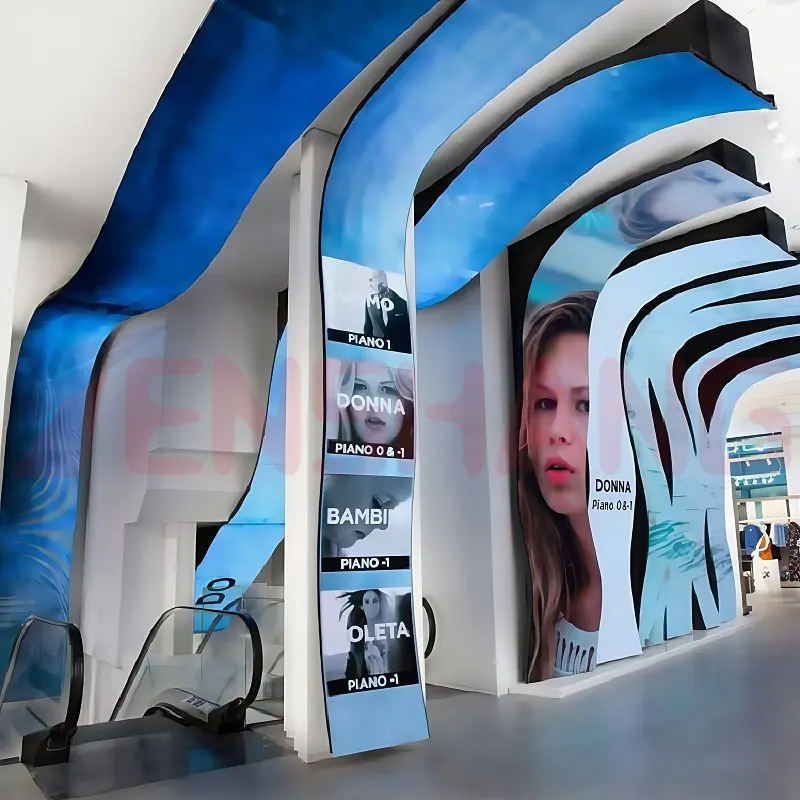
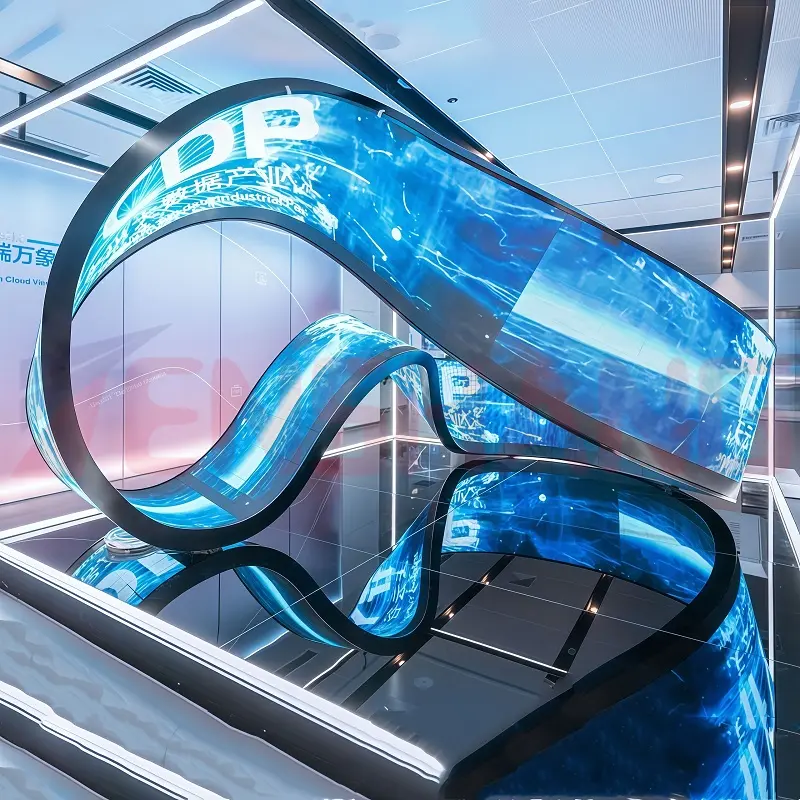
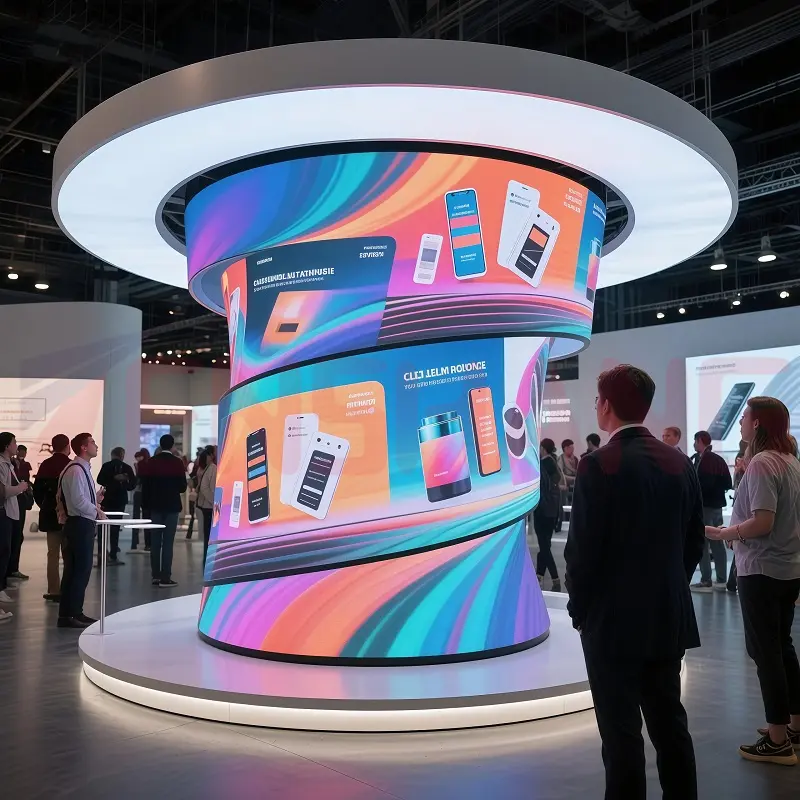
FAQs
-
Q1. How far can a flexible LED screen bend? Is there a fixed bending radius?
-
Q2. Is there any difference between the resolution and display effect of flexible screens and traditional LED screens?
-
Q3. How long does a flexible screen last? Will the lifespan be shortened due to bending?
-
Q4. Is flexible LED screen suitable for outdoor use? What is the waterproof and dustproof performance?
-
Q5. Can flexible screens be attached to any surface? What are the installation methods?
-
Q6. What is the weight and thickness of the flexible screen? Is it suitable for hanging or high altitude installation?
-
Q7. If the led flexible screen is partially damaged, is it easy to repair? Is it cost high?
-
Q8. Will the screen appear "fatigue" or deformation in a long-term bending state?








